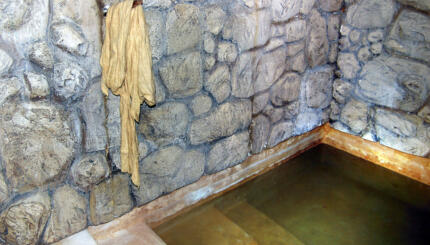Many married Orthodox women cover their hair with wigs as a sign of modesty. Some of the wigs are pretty ugly looking, but many of them are gorgeous, and they can cost thousands and thousands of dollars, depending on the length, color, and style you want. Why the expense? Triplecanopy has a long and fascinating profile of Helene Rosen, a sheitel-maker for Orthodox Jews, who moved to South America (Peru and then Paraguay) in order to be closer to the supply of hair she was using to make wigs:
The market for human hair is generally limited to places with impoverished populations willing to sell a two-foot ponytail—the product of two years of growth—for twenty dollars. Dark hair comes primarily from South America, India, and Mongolia. Helene says that the ample selection of hair colors and textures in South America—the result of more than twenty-five generations of intermarriage between Europeans and indigenous people—make it the ideal source region. The hair of indigenous Peruvian women is thick, straight, and black—perfect for the lace-front wigs sought by black women, who have come to represent the majority of Helene’s business—and is worn in two braids that often stretch all the way down their backs and are plaited with tassels made from Alpaca wool. Orthodox women prefer the silkier, finer texture of Argentinean hair, or else the more rare blonds and reds from eastern Europe and Russia (generically labeled as “European” hair), which garner one hundred dollars per two-foot strand. “The European hair is very bouncy,” Helene says. “It’s just characteristic—like some people have blue eyes, some people have dark eyes. With Indian hair, the bottom is poofy and doesn’t move that much. For a wig to look natural, we need the bottom to be bouncy.”
The profile will probably blow your mind once or twice. It’s long, but worth it. Check it out.
For English on this video, click the cc button.


